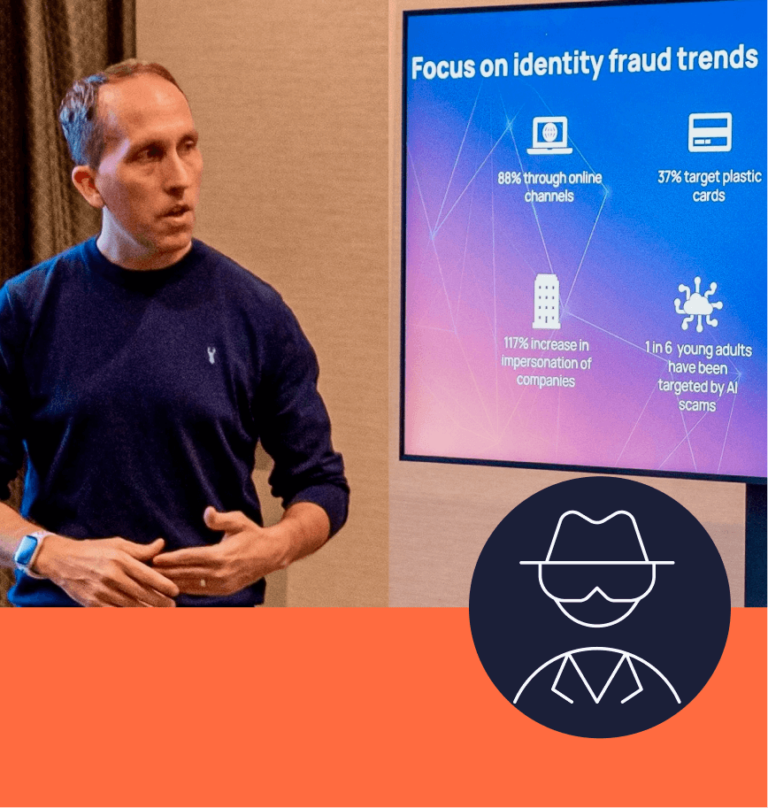Categorized as a major threat to the stability of the financial system since the late ‘80s, what more can be done to tackle the global trade in dirty money?
In 1989, the Financial Action Task Force (FATF) was created to address the emerging threat posed by money laundering and terrorism financing, and provide some much-needed stability to the financial system.
However, more than 30 years later, the dangers of the trade in dirty money still looms large. In fact, according to the United Nations Office on Drugs and Crime, up to $2 trillion is laundered every single year.
In a June 2023 report, the European Banking Authority announced that money laundering and terrorist financing risks were still not being managed effectively by EU payment institutions, citing insufficient AML/CFT internal controls. Findings from the report indicated that as some authorities were not supervising their sector effectively, payment institutions with weak AML/CFT controls were still managing to operate in the EU by establishing an entity in a member state where authorization and AML/CFT supervision processes were less stringent.
Money laundering leads to unreliable changes in money demand, major risks to a bank’s soundness, affects the legality of financial transactions, and wreaks havoc on exchange rates due to unanticipated cross-border asset transfers.
So, what more can be done, and how can you better protect your business and your customers from the scourge of money laundering? Below, we share some of the most common red flag indicators associated with money laundering.
What is money laundering?
In short, money laundering refers to the act of obscuring the source of ill-gained funds, and injecting them into the legitimate financial system. In 1988, the United Nations Vienna Convention Article 3.1 defined money laundering as:
The conversion or transfer of property, knowing that such property is derived from any offense(s), for the purpose of concealing or disguising the illicit origin of the property or of assisting any person who is involved in such offense(s) to evade the legal consequences of his actions.
The United Nations Vienna Convention Article 3.1 (1988)
For a more detailed explanation of how money laundering works, read our ‘Explaining the 3 stages of money laundering’ blog. Or, if you’re interested in how money laundering is threatening the stability and integrity of online casinos, read our blog.
Organizations fighting back.
As money laundering is transnational by nature, many international coalitions have been developed in a bid to tackle the issue. Some of the major groups focused on combating money laundering and adjacent offenses include the FATF, the Egmont group (composed of 166 Financial Intelligence Units [FIU]), Interpol, Europol and UNODC.
Different legal frameworks and regulations have also been created to support anti-money laundering efforts. For example, in the European Union (EU), there have been multiple AML directives (the latest being AMLD 6) featuring requirements, tools and processes for EU countries, their respective authorities, and “selected obliged entities”.
A proposal part of a legislative package to strengthen European AML/CFT rules also laid ground for the creation of a supranational body – the Anti-Money Laundering Authority (AMLA), which should be created this year and become fully operational by 2026.
6 money laundering red flag indicators.
- Unusual transaction patterns: Different transactional patterns can indicate when money laundering is taking place. Fast-paced transactions coming and going, significant increases in frequency or value, structuring schemes to break down deposits as well as inconsistent transactions regarding the client’s activities should all raise eyebrows and hint at suspicious activities.
- Cash-intensive activities: As cash is the major facilitator of money laundering, cash-related businesses are prime targets for money launderers. They offer an unparalleled opportunity to move funds with extremely limited monitoring, and relatively easy ways to escape controls. Businesses with a high volume of cash transactions (casinos, restaurants, grocery stores) or with no apparent justification for cash transactions (construction companies, service providers) may contribute to money laundering schemes. Important controls have been implemented in regulatory frameworks to hinder money laundering, such as reporting thresholds for cash transactions, deposits, or withdrawals.
- Third party relationships: Finding the beneficial ownership of companies in tax havens is an uphill battle, and will remain so, especially in countries with less clear regulations. Money launderers may use third parties to create complex transaction chains, involving multiple accounts or intermediaries, to obscure the trail and source of illicit funds. Some laundering schemes will also appeal to complex international ownership structures, and leverage shell or offshore companies with nominees to hide beneficial ownership. Transactions from Politically Exposed Persons must also be considered when looking for signs of money laundering.
- Specific geographical areas: Some countries are more exposed to corruption, organized crime, and money laundering than others, due to weak regulatory systems and poor governmental oversight. When monitoring transactions, geolocation data might be an indicator of suspicious activities. To support transactional analysis, the Basel AML index and Corruption Perception Index are always helpful to put into perspective global money laundering risks per country.
- Deficient financial systems: “Finding the weakness” could be the motto for money launderers. Whether it is corruption-enabled, lack of proper KYC/AML program implementation, or simply weak regulatory framework, some financial systems are easier than others to launder money. In particular, inadequate due diligence processes or weak internal controls within a financial institution are especially interesting for people looking to hide the source of their funds.
- Technology-enabled money laundering: Digitalization and technological developments have been powerful enablers of money laundering, and opportunities are countless. The emergence of cryptocurrencies and virtual assets provides an additional layer of anonymity to be exploited, on top of decentralized or peer-to-peer exchanges. For example, funds going through an account and instantly converted into crypto might be flagged as suspicious. Read more about the need for cryptocurrency compliance and regulation in our ‘How criminals leverage non-compliant crypto exchanges for money laundering’ blog.
Darknet marketplaces also facilitate illicit transactions and provide means to acquire fictitious identities. Darknet visitors are able conceal their identity or location thanks to specific protocols, VPNs, or proxy servers.
AML measures and deterrence mechanisms.
Having a robust AML program is essential to effectively deter money laundering. Countries with strong AML regulatory frameworks now enforce fines and administrative sanctions on actors who fail to demonstrate effective AML programs. For example, the French institution Autorité de Contrôle Prudentiel et de Résolution in charge of monitoring the activity of banks and insurances can impose fines up to €100 million or 10% of a company’s annual turnover. In 2020, the UK’s Financial Conduct Authority fined the London branch of the German Commerzbank £37 million, “for failing to put adequate anti-money laundering (AML) systems and controls in place between October 2012 and September 2017.”
To remain compliant and avoid being sanctioned by authorities, having your reputation damaged, and incurring fines, improving these three pillars can drastically help:
- KYC processes: Implementing thorough KYC procedures is crucial for financial institutions. This involves verifying the identity of customers, understanding their business activities, and assessing the legitimacy of the funds involved in transactions. Enhanced due diligence measures may be applied for higher-risk customers, such as PEPs or high net worth individuals. KYC obligations are now largely informed by national or supranational regulations, such as AML directives in Europe.
- Transaction monitoring and reporting: Transaction monitoring plays a vital role in tackling money laundering by identifying and flagging suspicious financial transactions for further investigation. Rule-based and behavior-based analytics, detection of unusual activity and real-time monitoring are all actions that can help detect suspicious patterns and support further investigations.
- Collaboration and information sharing: Financial institutions are required to file suspicious activity reports (SAR) through dedicated channels with their respective authorities, whenever there are reasonable grounds to suspect money laundering. Enhancing public-private partnerships is therefore one of the main ways to successfully tackle money laundering. As a global issue, money laundering also requires international cooperation and information sharing among different countries and regulatory bodies. Collaboration facilitates the exchange of intelligence, supports investigations, and assists in tracing and recovering illicit assets across borders.
Combating money laundering for the better good.
Money laundering poses a significant threat to the integrity of financial systems and can have severe consequences for global security. According to the International Monetary Fund, “Countries with weak AML/CFT regimes are subject to the negative effects that large international criminal organizations can have on their economic growth and financial stability.”
With IDnow’s proprietary fraud prevention technology, you can conduct identity verification checks to prevent fraudulent activity such as account takeover, identity theft, and money laundering.
Frequently Asked Questions (FAQs)
What are the main AML red flags?
Common red flags include large cash transactions, structuring transactions to avoid reporting thresholds, rapid movement of funds, unusual customer activity, lack of business justification, dealing with non-resident customers or Politically Exposed Persons, offshore transactions, unregistered or unlicensed entities, and lack of proper documentation.
What is an example of a red flag in AML?
One example of a red flag in AML is a sudden and unexplained increase in cash deposits or withdrawals in a customer’s account. For example, if a customer who typically makes small transactions suddenly starts depositing or withdrawing substantial amounts of cash without an apparent reason, it could indicate potential money laundering activity.
What are some red flags in banking?
In banking, unusual cash deposits or withdrawals, rapid movement of funds, multiple accounts with similar names or unusual customer behavior could indicate money laundering activities, prompting the need for further investigation or the need to submit a SAR to the national FIU.
By

Olivier Artus
Sales Director at IDnow
Connect with Olivier on LinkedIn



